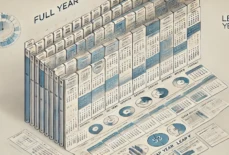In the world of modern manufacturing, CNC milling has emerged as a game-changer. Its precision and versatility have revolutionized the way we create parts and components for various industries. However, as the world embraces sustainability and reliability, the focus has shifted towards identifying CNC milling operations that align with these values. In this article, we explore the synergy between sustainability and reliability in CNC milling, shedding light on the operations that are both environmentally conscious and dependable.
Sustainable CNC Milling Operations
Sustainability in CNC milling isn’t a mere buzzword; it’s a necessity. Sustainable practices encompass various techniques and measures aimed at minimizing the environmental impact while optimizing resource utilization. One of the primary ways CNC milling achieves sustainability is through efficient material usage. Advanced CAD/CAM software allows for precise material planning, reducing waste and excess material.
Recycling is another key component of sustainability in CNC milling. Scraps and excess materials generated during the milling process can often be recycled or repurposed, further reducing waste. Sustainability isn’t just about being environmentally responsible; it’s also about cost savings. Efficient material usage and recycling contribute to reduced manufacturing costs, making it a sustainable and economical choice.
Reliable CNC Milling Techniques
Reliability in CNC milling is all about consistency and quality control. Reliable milling operations ensure that each part produced is identical, meeting strict specifications and tolerances. This is achieved through precision machining techniques and rigorous quality control measures. Quality checks at various stages of production help identify and rectify any errors, reducing the risk of defects and rework.
Reliability in CNC milling extends to the repeatability of results. The ability to consistently produce high-quality parts reduces the chances of costly errors and product failures. For industries that rely on CNC-machined components, such as aerospace and medical devices, reliability is non-negotiable. Every component must meet exacting standards to ensure the safety and performance of the final product.
The Interplay Between Sustainability and Reliability
Interestingly, sustainability and reliability in CNC milling are often intertwined. Sustainable practices drive innovation and process improvement, leading to more reliable operations. For example, the push to reduce waste through efficient material usage not only benefits the environment but also results in more consistent outcomes. When waste is reduced, there are fewer variables that can lead to errors in the final product.
The commitment to sustainability often encourages businesses to invest in the latest CNC milling technology and practices. This, in turn, contributes to more reliable operations. The pursuit of sustainability drives the development of new, more efficient machining techniques that enhance precision and quality.
Conclusion
In conclusion, the quest for sustainable and reliable CNC milling operations is not just a business aspiration; it’s a necessity. Sustainability in CNC milling goes beyond environmental responsibility; it’s about optimizing resources and reducing costs. Reliability is the bedrock of industries that rely on CNC-machined parts, ensuring that every component meets strict standards.
For those seeking CNC milling operations that seamlessly blend sustainability and reliability, Shamrock Precision offers a wealth of expertise in this field. By collaborating with experienced professionals, businesses can harness the advantages of both sustainability and reliability in CNC milling. The result is not only environmentally conscious but also a path to cost savings and consistently high-quality components.


























































